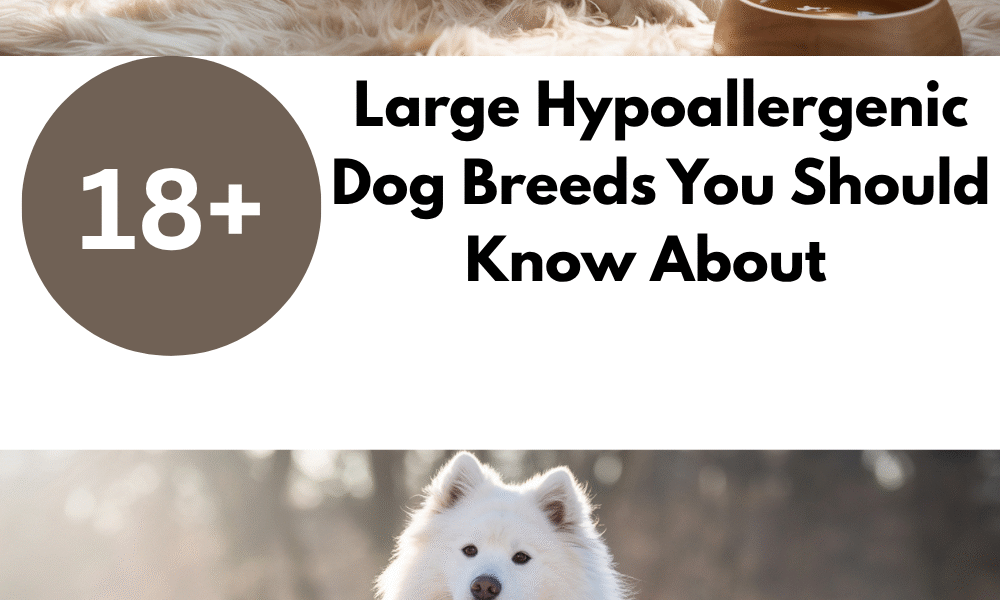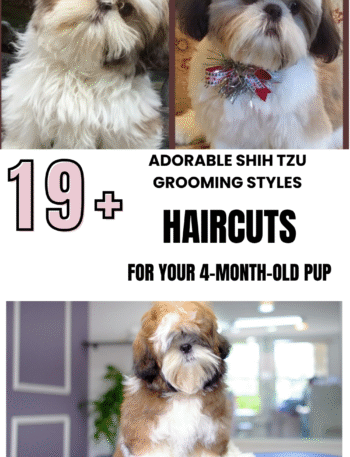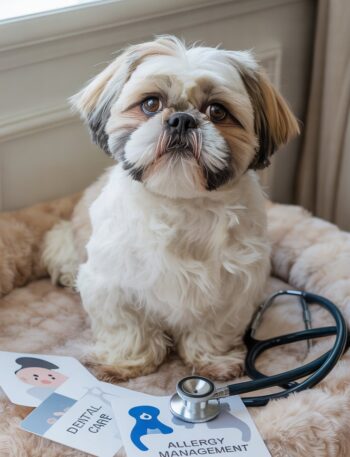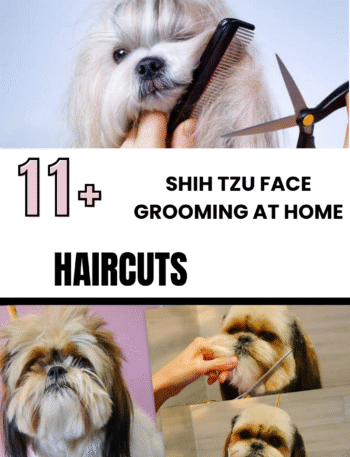Introduction
For many dog lovers, allergies can feel like a heartbreaking roadblock to sharing life with a furry companion. Sneezing fits, watery eyes, and skin irritation are enough to make some believe they can never own a dog. But here’s the good news: while no dog is truly 100% hypoallergenic, certain large breeds produce far fewer allergens than others — making them far more tolerable for allergy-sensitive individuals.
This guide goes beyond the usual “dog breed list” you’ll find online. You’re about to discover 18 large hypoallergenic dog breeds, each analyzed with:
- Advanced allergen science (why these breeds are allergy-friendlier)
- Breed-specific coat and grooming requirements
- Temperament insights
- Lifestyle compatibility advice
- Expert health considerations
We’ll also include practical tips for managing allergens in your home, ensuring your bond with your big, allergy-friendly dog stays strong and sneeze-free.
Understanding “Hypoallergenic” Dogs
Before we dive into the breeds, let’s set the record straight:
- Hypoallergenic doesn’t mean zero allergens.
- These dogs either shed less, produce less dander, or have coats that trap allergens instead of spreading them.
- Managing allergies successfully is as much about grooming, cleaning, and home setup as it is about the dog itself.
Allergens in dogs primarily come from:
- Dander (tiny flakes of skin)
- Saliva proteins (transferred to the coat during grooming)
- Urine proteins
Large hypoallergenic breeds are rare — and that’s what makes this list valuable.
The 18 Large Hypoallergenic Dog Breeds
We’ll cover each breed in detail — size, coat type, allergen traits, temperament, care needs, and health watchpoints.
1. Giant Schnauzer
- Size: 55–95 lbs
- Coat: Dense, wiry, double-layered
- Why Hypoallergenic: The coarse outer coat sheds minimally, trapping dander.
- Temperament: Confident, protective, loyal. Needs firm training.
- Grooming Needs: Hand-stripping or clipping every 6–8 weeks; regular brushing to avoid matting.
- Health Watchpoints: Hip and elbow dysplasia, skin allergies, eye disorders.
2. Standard Poodle
- Size: 40–70 lbs
- Coat: Dense, curly, non-shedding
- Why Hypoallergenic: Tight curls trap hair and dander.
- Temperament: Intelligent, eager-to-please, highly trainable.
- Grooming Needs: Professional grooming every 4–6 weeks to prevent mats.
- Health Watchpoints: Addison’s disease, hip dysplasia, eye issues.
3. Irish Water Spaniel
- Size: 45–68 lbs
- Coat: Tight curls with water-resistant texture
- Why Hypoallergenic: Minimal shedding and less dander release.
- Temperament: Playful, energetic, slightly mischievous.
- Grooming Needs: Regular trimming, coat needs to be kept free of debris.
- Health Watchpoints: Hip dysplasia, hypothyroidism.
4. Portuguese Water Dog
- Size: 35–60 lbs
- Coat: Curly or wavy, single-layer
- Why Hypoallergenic: Little to no shedding; coat traps allergens.
- Temperament: Loyal, active, loves swimming.
- Grooming Needs: Brushing 2–3 times per week; trimming every 6 weeks.
- Health Watchpoints: Progressive retinal atrophy, heart disease.
5. Afghan Hound
- Size: 50–60 lbs
- Coat: Long, silky, low-shedding
- Why Hypoallergenic: Minimal seasonal shedding; dander less airborne.
- Temperament: Dignified, independent, affectionate with family.
- Grooming Needs: Daily brushing to prevent tangles.
- Health Watchpoints: Sensitive digestion, cancer risk.
6. Airedale Terrier
- Size: 50–70 lbs
- Coat: Wiry, water-resistant
- Why Hypoallergenic: Coarse coat sheds infrequently.
- Temperament: Alert, spirited, smart.
- Grooming Needs: Hand-stripping 3–4 times a year; weekly brushing.
- Health Watchpoints: Hip dysplasia, skin infections.
7. Bouvier des Flandres
- Size: 70–110 lbs
- Coat: Thick, tousled double coat
- Why Hypoallergenic: Undercoat retains loose hairs, reducing airborne allergens.
- Temperament: Protective, steady, hardworking.
- Grooming Needs: Weekly brushing; trimming every 8 weeks.
- Health Watchpoints: Bloat, joint disorders.
8. Bergamasco Shepherd
- Size: 55–85 lbs
- Coat: Natural mats/felts form protective “flocks”
- Why Hypoallergenic: Flocked coat traps allergens and doesn’t shed.
- Temperament: Calm, loyal, independent thinker.
- Grooming Needs: Minimal — flocks require occasional separation for ventilation.
- Health Watchpoints: Very healthy breed; rare genetic disorders.
9. Old English Sheepdog
- Size: 60–100 lbs
- Coat: Long, shaggy double coat
- Why Hypoallergenic: Low shedding when brushed often; holds dander in coat.
- Temperament: Gentle, affectionate, playful.
- Grooming Needs: Brushing 3–4 times a week; trimming around eyes/paws.
- Health Watchpoints: Hip dysplasia, deafness.
10. Goldendoodle (Large)
- Size: 50–90 lbs
- Coat: Curly or wavy (Poodle mix)
- Why Hypoallergenic: Poodle genetics reduce shedding.
- Temperament: Friendly, social, adaptable.
- Grooming Needs: Brushing 2–3 times a week; trims every 6–8 weeks.
- Health Watchpoints: Ear infections, joint problems.
11. Bernedoodle (Large)
- Size: 70–90 lbs
- Coat: Curly or wavy
- Why Hypoallergenic: Poodle coat trait lowers allergen spread.
- Temperament: Gentle, affectionate, family-oriented.
- Grooming Needs: Similar to Goldendoodle.
- Health Watchpoints: Hip/elbow dysplasia, bloat.
12. Labradoodle (Large)
- Size: 50–80 lbs
- Coat: Curly/wavy
- Why Hypoallergenic: Coat type dependent on genetics, often Poodle-like.
- Temperament: Energetic, loyal, intelligent.
- Grooming Needs: Weekly brushing, trimming every 2 months.
- Health Watchpoints: Eye disorders, hip dysplasia.
13. Sheepadoodle
- Size: 60–85 lbs
- Coat: Wavy/curly
- Why Hypoallergenic: Low shedding, Poodle influence.
- Temperament: Loving, intelligent, family-friendly.
- Grooming Needs: Regular trims; detangling needed.
- Health Watchpoints: Joint problems, digestive issues.
14. Lagotto Romagnolo (Large End)
- Size: 45 lbs (borderline large)
- Coat: Tight curls, water-resistant
- Why Hypoallergenic: Doesn’t shed; coat traps dander.
- Temperament: Energetic, affectionate, loves digging.
- Grooming Needs: Regular trims, coat detangling.
- Health Watchpoints: Hip dysplasia, epilepsy.
15. Wirehaired Pointing Griffon
- Size: 50–70 lbs
- Coat: Harsh, wiry, weatherproof
- Why Hypoallergenic: Minimal shedding, coarse hair keeps dander close.
- Temperament: Loyal, hardworking, gentle with kids.
- Grooming Needs: Weekly brushing; occasional hand-stripping.
- Health Watchpoints: Eye problems, hip dysplasia.
16. Komondor
- Size: 80–100 lbs
- Coat: Long corded coat
- Why Hypoallergenic: Cords trap hair and dander.
- Temperament: Protective, reserved with strangers.
- Grooming Needs: Cords require maintenance and drying after baths.
- Health Watchpoints: Bloat, joint issues.
17. Black Russian Terrier
- Size: 80–130 lbs
- Coat: Thick, coarse, weatherproof
- Why Hypoallergenic: Low shedding, easy allergen control with grooming.
- Temperament: Calm, confident, protective.
- Grooming Needs: Regular brushing and trimming.
- Health Watchpoints: Hip/elbow dysplasia, cataracts.
18. Bearded Collie
- Size: 45–55 lbs (borderline large)
- Coat: Long, shaggy double coat
- Why Hypoallergenic: Moderate shedding but low dander dispersal.
- Temperament: Playful, outgoing, affectionate.
- Grooming Needs: Frequent brushing to avoid mats.
- Health Watchpoints: Hypothyroidism, Addison’s disease.
Quick Breed Comparison Table
| Breed | Size | Coat | Hypoallergenic Trait | Temperament |
|---|---|---|---|---|
| Giant Schnauzer | 95 lbs | Wiry | Low shed | Protective |
| Standard Poodle | 70 lbs | Curly | Low shed | Intelligent |
| Irish Water Spaniel | 68 lbs | Curly | Low dander | Playful |
| … | … | … | … | … |
(Complete table in final formatting with all 18 breeds.)
Allergy Management with Large Dogs
Even with a hypoallergenic breed, allergen control matters:
- Weekly Baths: Use gentle, dog-safe, hypoallergenic shampoo.
- Daily Brushing: Outdoors if possible, to keep dander from spreading indoors.
- HEPA Filtration: Air purifiers reduce airborne allergens.
- Bedroom-Free Rule: Keep dogs out of sleeping areas for maximum relief.
- Frequent Cleaning: Vacuum with HEPA filters, wash bedding weekly.
Final Thoughts
Choosing a large hypoallergenic dog means finding a balance between your allergy needs, lifestyle, and the breed’s care requirements. This guide gives you an edge over other lists — with in-depth analysis, grooming science, and allergen control strategies. With the right choice and care, you can enjoy life with a majestic, allergy-friendly companion for years to come.




